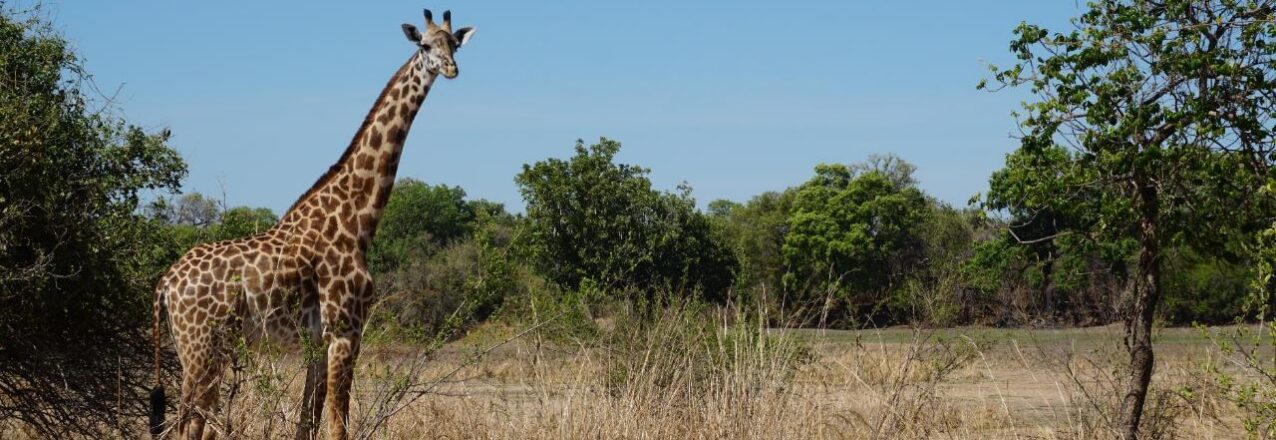EXECUTIVE SUMMARY
Zambia is one of Africa’s most resource-rich countries. Roughly two-thirds of Zambia’s land area is forested, and nearly 40 percent of the land area is contained within a network of national parks and forest reserves, and co-managed areas that overlap with customary community lands. Rural livelihoods depend heavily on small-scale agriculture, harvesting forest products, and use of wildlife and other natural resources.
Given the close interrelationship between local natural resource use and livelihoods, and management of wildlife and forests on a national scale, community-based natural resource management (CBNRM) is central to both livelihoods and conservation outcomes locally and nationally. Like many countries in southern Africa, Zambia has a long history of working to develop various approaches to forest and wildlife management that involve local communities and attempt to develop various forms of CBNRM. However, for both wildlife and forest management, community management of natural resources has been constrained by key institutional and governance barriers that limit community rights and access to the benefits from sustainable use and related enterprises.
Over the past five years a number of important shifts have taken place in Zambia that are reshaping the potential for CBNRM. A new Forests Act passed in 2015, and subsequent community forest management regulations (GRZ, 2018b), create provisions for community forest management groups (CFMGs) to secure rights for management over forests and capture the benefits from use of forest products. These provisions, though quite recent, are already being used on a fairly large scale in different parts of Zambia to strengthen community-based forest management. In Eastern Province, social enterprises such as BioCarbon Partners (BCP) and Community Markets for Conservation (COMACO) are working with communities, the Forestry Department, and the Department of National Parks and Wildlife, to develop community forest management on over one million hectares of forests and key wildlife habitats.
Zambia’s wildlife sector is undertaking a number of policy and legal reforms. A new Wildlife Policy (GRZ, 2018a) provides strong language on the importance of devolved community management and empowerment; however, the most recent Wildlife Act (2015) does not provide for significantly enhanced local management rights. Chronic institutional challenges in game management areas (GMAs) created by the lack of community authority and ability to benefit from trophy hunting and other wildlife uses remain in place. Field-level experiments with community game ranching, community trusts, and “conservancies” are working to try and develop new approaches to CBNRM at the local or landscape scale, but remain limited by the national legal and policy context in the wildlife sector.
Overall, though, CBNRM in Zambia stands at a potentially important period of reform and innovation, driven largely by the combination of institutional reforms in the forestry sector, growing entrepreneurial efforts to combine community forest management with new forest-based products such as carbon credits produced through REDD+, and ongoing efforts to develop new approaches to CBNRM despite the longstanding institutional constraints in the wildlife sector. Key opportunities to build on these trends going forward include:
- Increasing cross-learning and exchange from field-level experiments that are applying the new community forest management regulations, or developing new locally-adapted CBNRM models. In particular, integrating wildlife and forest management efforts, as well as devolving responsibilities and revenue streams to communities, is expected to improve outcomes. Learning and exchange across community forest management efforts and wildlife management in the GMAs will be particularly important and will facilitate integrated approaches to CBNRM at the community level.
- Investing in wider uptake of community forest management and building on the relatively rapid progress made in creating community forestry management agreements to further scale this promising model over the vast areas of forest on customary land both within GMAs and in undesignated “open areas” around the country.
- Supporting the development of forest-based enterprises at the community scale, from products such as carbon, timber, honey, mushrooms, and others, that can generate sustainable flows of revenue within newly designated community forests. Zambia has the potential to quickly move to the forefront of community forestry in Africa based on the new legal framework created by the 2015 Forests Act, the existing forest-based enterprises already working in key landscapes, and the significant economic potential of forests on customary lands.
- Promoting learning between field-level initiatives working to develop new ways of engaging communities in wildlife conservation and policy-makers developing new regulations that pertain to areas such as community game ranching. Key legal and regulatory reforms are required to enable greater community-level investment in wildlife management. This has been the case in Zambia for many years, but the continued development of field-level lessons, and the potential willingness of policy makers to consider new reforms, may open the door to new possibilities.
- Advancing each of the above opportunities is contingent on capacity support for community governance structures, whether community resource boards, CFMGs, fisheries groups, or village action groups. National-level bodies have emerged to advocate as a collective voice for these groups with government and coordinate governance and technical skills development for improved management at the local level.


